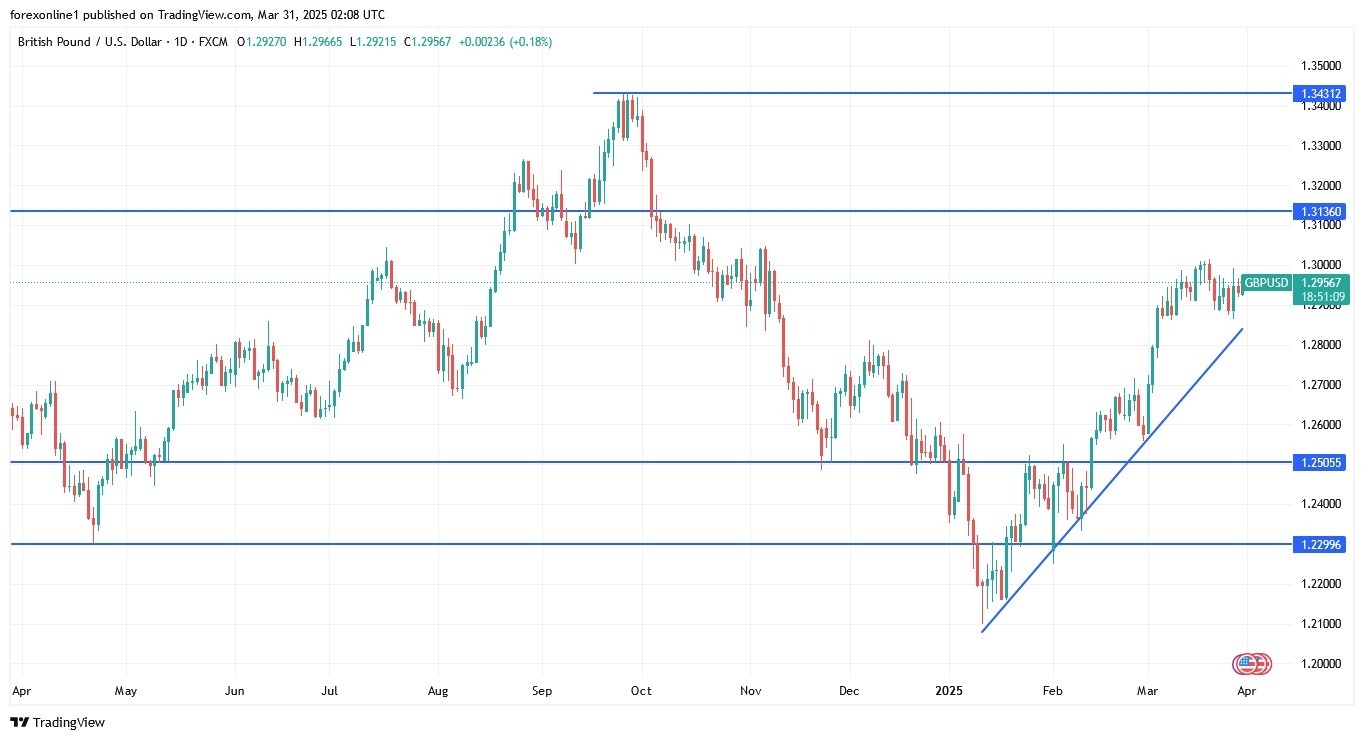- Since mid-March trading, the GBP/USD currency pair has been in an upward trajectory, breaking above the psychological resistance of 1.3000.
- The gains extended to the highest levels for the pair in more than four months, and closing last week’s trading stable around the 1.2937 level.
- According to licensed trading company platforms, the GBP/USD pair faced significant blows after the UK Consumer Price Index (CPI) came in weaker than expected, reinforcing the possibility of another round of monetary easing from the Bank of England in its upcoming policy statement.
- It is worth noting that the Bank of England’s recent decision was marked by less pessimistic participation in the Monetary Policy Committee, with only one member voting for an interest rate cut, while the rest called for no change in monetary policy.

Conversely, the US dollar finds support from the higher-than-expected rise in US durable goods orders, in addition to the return of risk aversion due to Trump’s tariffs on car imports. Concerns about exacerbating trade uncertainty keep riskier currencies in a weak position.
Trading Tips:
The GBP/USD pair is on an upward trajectory, but it’s important to note that investor risk aversion will benefit the US dollar.
The Impact of US Tariffs on the Currency Market
US trade policy has been a major focus of the forex markets following US President Trump’s announcement of a 25% tariff on all auto imports into the United States. Financial markets remain tense, as the US is expected to announce reciprocal tariffs this week. Uncertainty surrounds the level of tariffs and retaliatory measures from other countries.
The US tariffs will have some impact on the British economy, but the European Union is expected to perform worse. UK bond yields also rose slightly, boosting the pound.
The US dollar will be vulnerable if US economic conditions deteriorate, but there has been no evidence of labour market pressure in the latest jobless claims data. Major geopolitical developments have contributed to reducing market interest in the UK Spring Budget statement, but there are still fundamental concerns surrounding growth forecasts, which could weaken the British pound.
Technical Analysis for the GBP/USD pair today:
The GBP/USD pair is currently trading at 1.2940, showing signs of decline after reaching its recent highs. The chart shows a clear upward trend since January, with price action forming a series of bottoms and highs, although the pair has recently faced resistance. The GBP/USD pair is currently hovering around the 38.2% Fibonacci retracement level at 1.28379, after retreating from its recent peak. Important support lies at the 50% (1.27828) and 61.8% (1.27276) retracement levels, which could form potential rebound areas if the current decline continues.
Overall, the underlying trend remains bullish, as evidenced by the price trading above both the rising trend line established since January and the major moving averages. However, recent price action suggests a possible consolidation or minor correction phase. Currently, the price is testing the short-term 100-period simple moving average, which has acted as dynamic support throughout the uptrend. The long-term 200-period simple moving average continues to slope upward, confirming the overall bullish bias in the market.
Meanwhile, the stochastic indicator shows that the GBP/USD pair is moving away from overbought conditions, with readings recently declining from above 80. This suggests that momentum may be slowing in the short term, which could support continued neutrality.
Ready to trade our GBP/USD Forex analysis? Here are the best regulated trading platforms UK to choose from.
